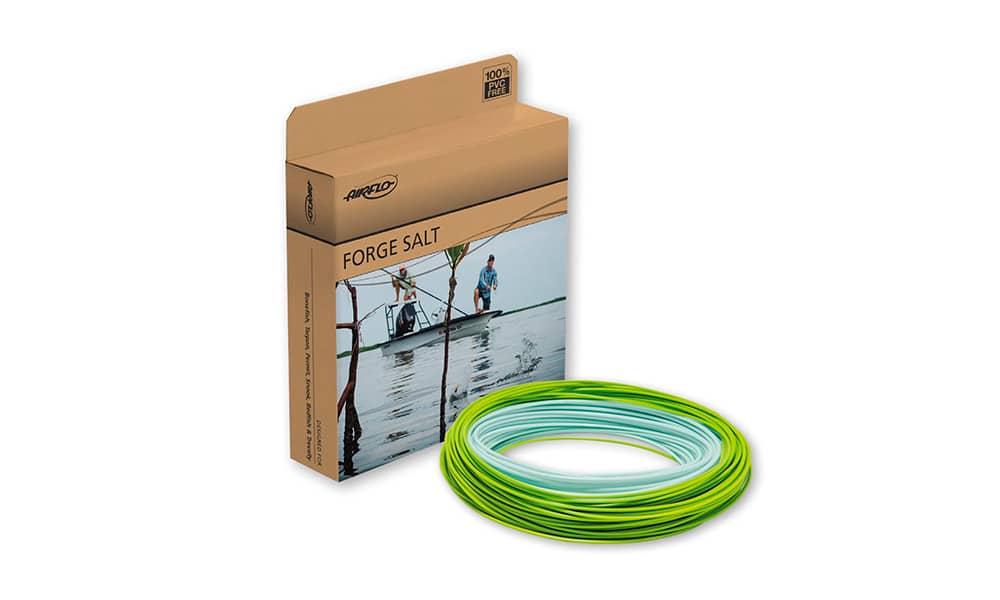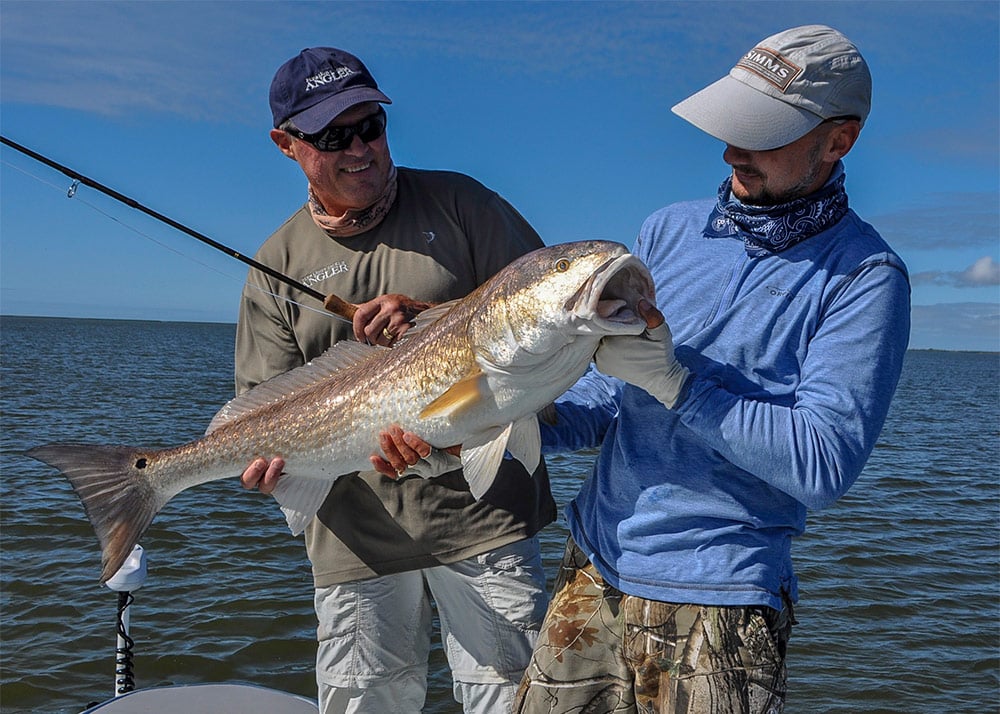
Whether fly fishing on the flats or offshore, there are many instances in which success depends largely on your ability to make a quick presentation. When that pod of big tarpon is closing fast, or a school of albies suddenly embarks on one of their short-lived frenzies off your bow, you gotta get your fly to the right spot pronto and without the three or four false casts that can alert the quarry of your presence. And your choice of fly lines can help or hinder your efforts.

Saltwater Taper has been around for some time, but anglers mistakenly assume it’s an all-around saltwater line when it is simply a line configured with a head shorter than standard lines with heads measuring 40 feet or a bit longer. Some manufacturers claim such lines excel for short casts, yet give you extreme distance as well. Frankly, that’s grist for debate. When distance casting is the drill, you’re better off with a line that has a longer head to allow you to control more line in the air. Fly lines labeled bonefish taper, tarpon taper or redfish taper are designed for relatively short casts often required when sight-casting. Such lines handle big or weighted flies well, too.
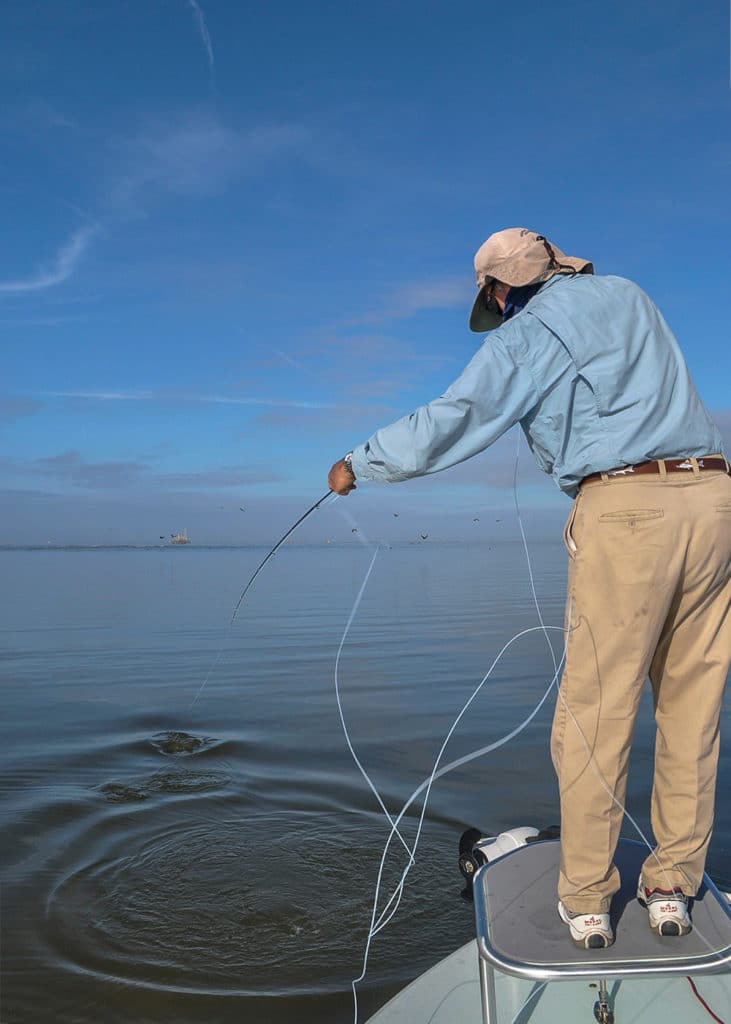
Sight-fishing often calls for casts of 40 feet or less, so long leaders — 10 to 16 feet long — frequently used for wary fish in shallow water makes casting more difficult, especially with weighted or bulky flies. On quick shots at close range, you may only have 20 feet of fly line outside the rod tip to shoot to fish you come across, so that calls for some “fat” up front, precisely why “quick-cast” fly lines — with heads in the 30- to 37-foot range — were designed.
On windy days when fish aren’t as skittish, or when casting into a feeding frenzy, you often can get by shortening your leader down to 10 feet or even 8. Shorter leaders greatly increase the power transfer required to turnover heavy or wind-resistent flies. Be sure to shorten each portion of the leader, the butt, mid section and tippet, proportionally. And beef up your tippet, too. Unless it’s a still, sunny day, and you’re fishing in very clear, shallow water, fish probably won’t be as leader-shy as you may think, and 12- or 15-pound tippet will turn your fly over far better than 8-pound. So experiment with leader lengths until you find a happy medium for the situation.
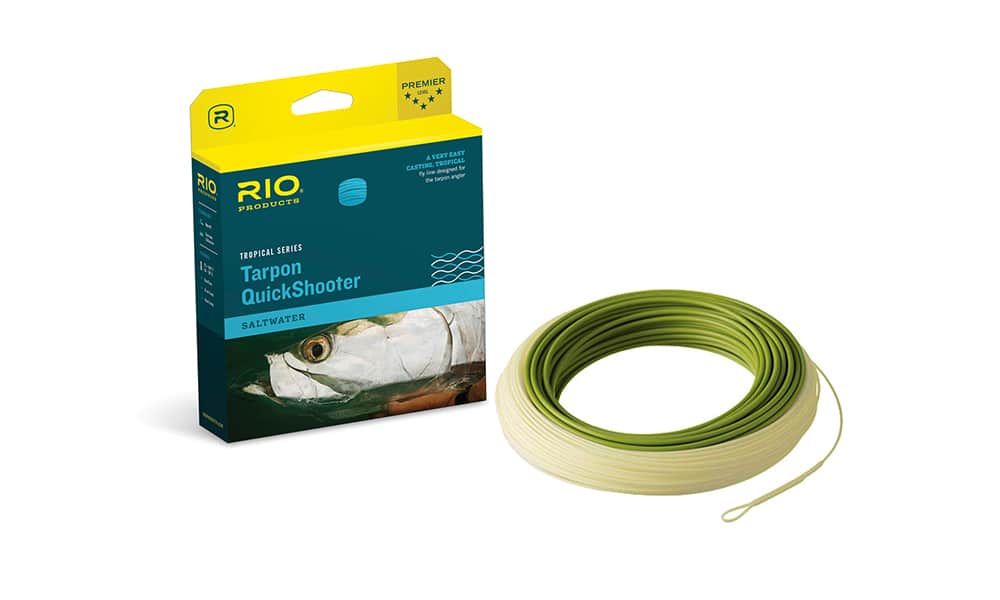
Rio Products offers three lines in its Quickshooter series with 30- to 35-foot heads. The Tarpon Quickshooter is touted by the company as a good choice for novice anglers, suggesting that the line’s heavier-than-normal head (375 grains on the 10-weight) makes it easier to feel the fly rod load during casting. The head measures 30 feet and is followed by a 10-foot “handling section” that gradually tapers toward a 60-foot length of running line. This 100-foot floating line has a 50-pound core for salt water and hot weather, encased in Rio’s AgentX coating for slickness and high floating. Other features include welded loops and dual-tone coloration, which marks the line’s taper changes. The Tarpon Quickshooter F/I version has a clear, slow-sinking tip.
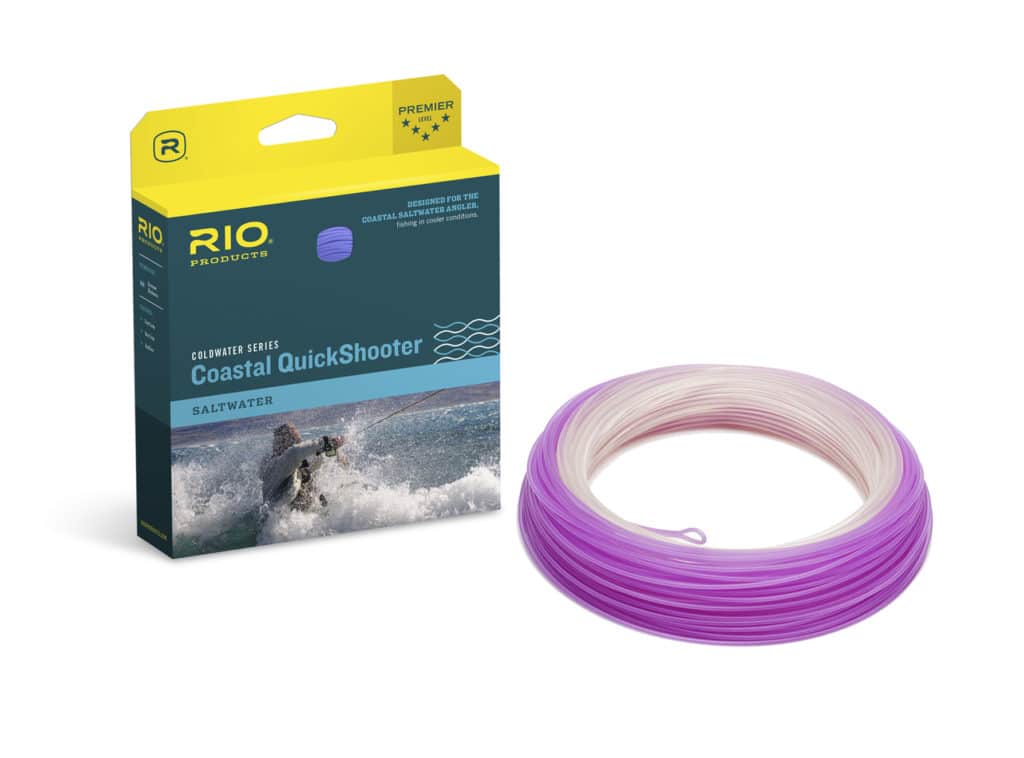
Rio’s Coastal Quickshooter is an intermediate-sink (sinks 1.4 inches per second) fly line designed for casting large flies in cooler climates. Its clear head is 34 feet long, and the core is more supple than the Bonefish and Tarpon Quickshooter lines, to minimize line memory in cold water. “We also offer the Coastal Quickshooter XP, a second version of this line that has an even shorter (30 feet) head. It’s the go-to line for breaking albies, which demand you get your fly into the fray quickly.”
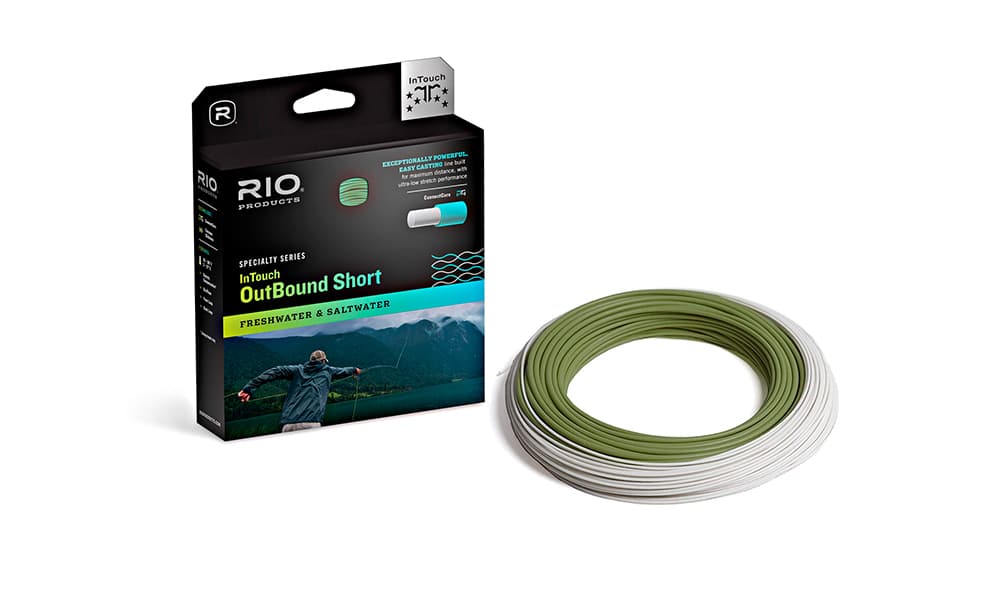
Another Rio line series perfect for quick shots at close range with minimal false-casting is the InTouch Outbound Short, which features a powerful 30-foot head, forward-weighted to load the rod with less effort and line out, plus an aggressive front taper (6-feet long) to carry and turn over large or heavily-weighted flies, Rio’s ultra-low stretch core, and a supple coating with propriatary XS Technology for superior slickness and tangle-free performance. This versatile series includes lines in 6 configurations of different densities: all floating, floating with a hover (very-slow sinking) head, floating with a 15-foot intermediate sink tip, all intermediate sink, intermediate with a 30-foot Class-3 or Class-6 sinking head.
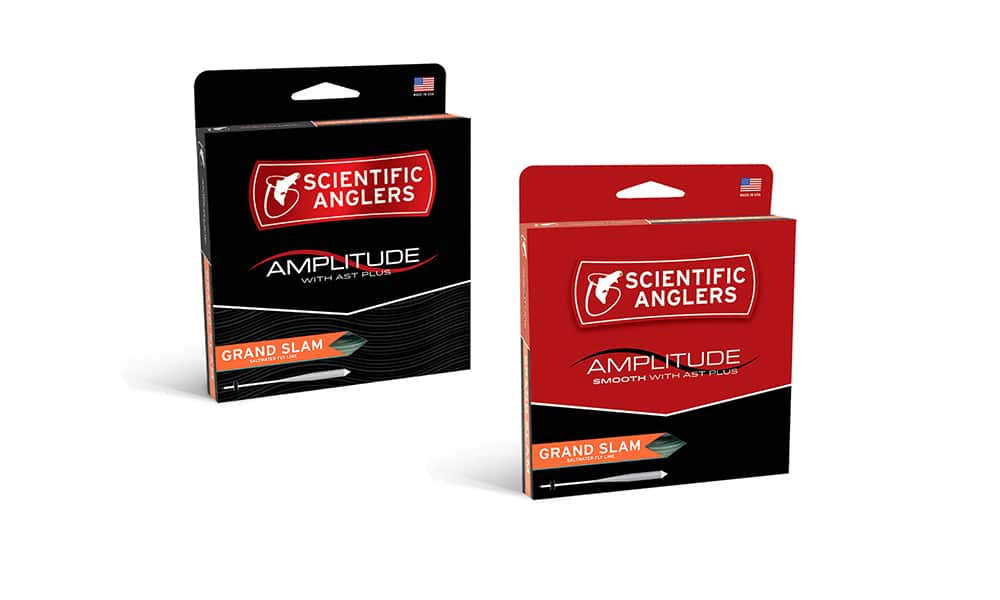
Scientific Anglers (SA) makes two Grand Slam series lines which, as the name implies, are a good choice to sight cast for bonefish, tarpon and permit. The first is the Amplitude Grand Slam, which SA claims will cast weighted shrimp and crab patterns, as well as tarpon toads with ease. With an overall head length of 40 feet (the belly is about 30), it has a very short front taper (about two feet long) to handle big and weighted flies.
By comparison, SA’s Amplitude Bonefish line (in line weights 5 through 9) has a longer 2-part front taper (approximately 8 feet), for more delicate presentations to skittish bones. This line has the company’s innovative Tropi-Core. “The core is braided mono,” said Scientific Anglers president Brad Beefus. “When we apply our coating to the braided core, it actually “drinks in” or adheres to the core better than it would to a single strand of mono. As a result of the fusion of coating and core, this braided-mono core ends up being stiffer than single-strand mono.” For an aggressive turnover, Beefus points out, “We placed the grain weight well up front, making the line three quarters of a weight heavier. So the extra mass forward combined with a 2-foot front taper translates into quick deliveries at short range.”
The line’s coating, in addition, is dual-textured. It has SA’s popular, textured surface up front, but the shooting line portion is dimpled like a golf ball, making it less abrasive to fingers and quieter while shooting through the rod guides. It is also tri-colored. The tip and front taper are horizon blue for stealth, transitioning to sand and then pale yellow in the shooting-line section.
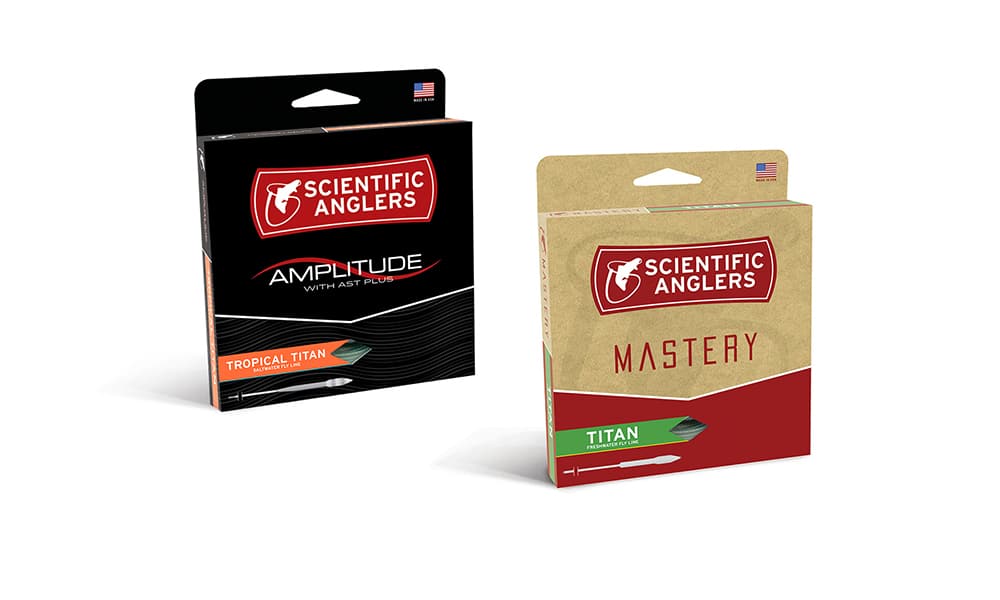
Scientific Anglers’s Amplitude Smooth Grand Slam is essentially the same line, but has a smooth coating for anglers who prefer it over the textured. And for quick casts with XL-size flies, there’s Amplitude Tropical Titan, lines built two line sizes heavier than the designated line weight for your rod, with powerful heads that load quickly and deliver large fly patterns to near and distant targets.
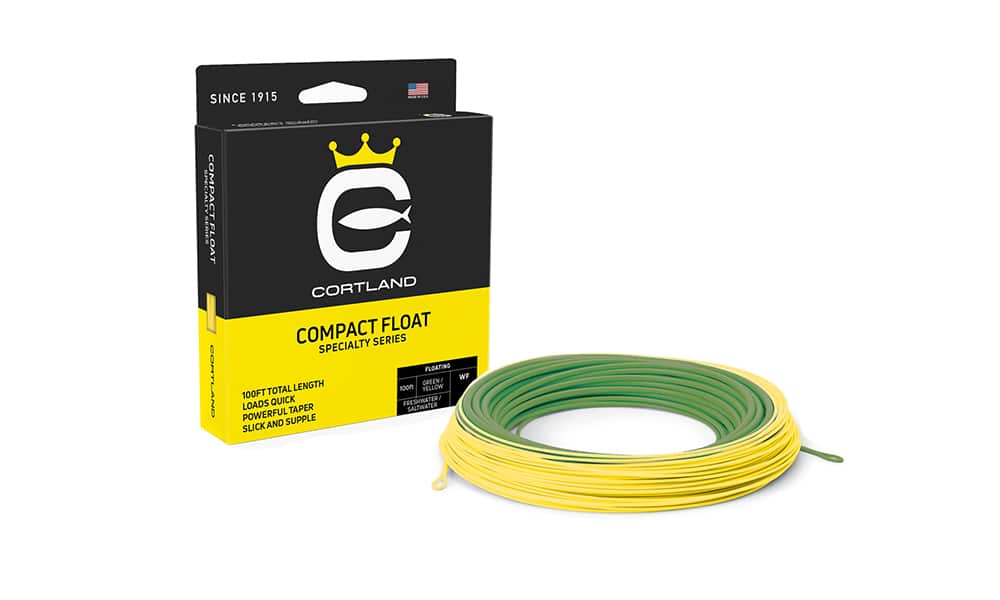
Cortland, meanwhile, offers its Compact series, which includes a floating line and 4 with heads of different sink rates. The Compact Float, perhaps the most popular, is a 2-tone floating fly line built on a braided, multifilament core. It’s also designed to load a rod quickly with an abbreviated, aggressive head measuring 26 feet in front, followed by a 13-foot transition and the running line. This series is rated in dual line sizes, from 5/6 through 11/12.
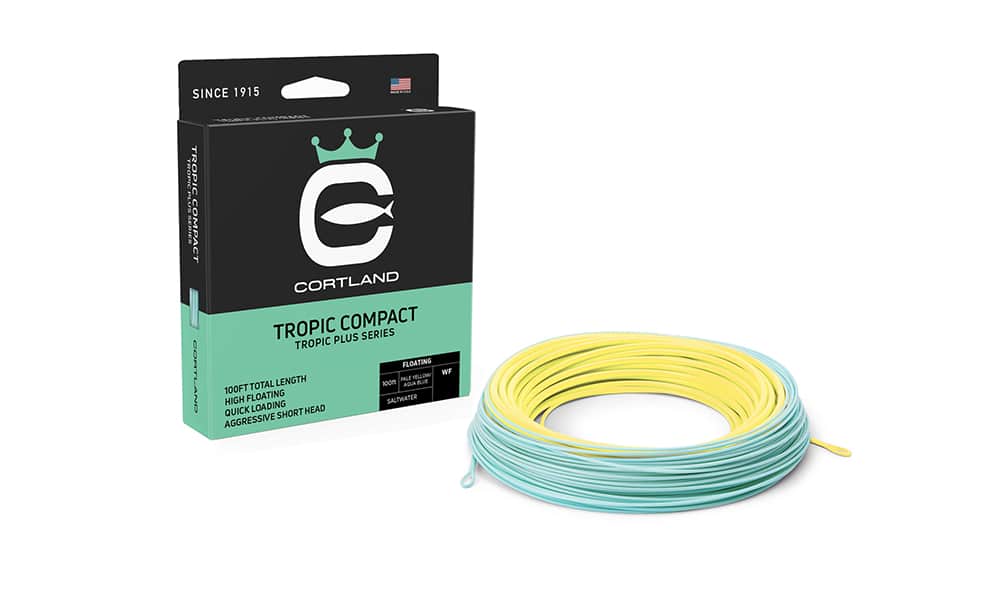
Another Cortland option is the Tropic Compact, a 100-foot fly line designed for the tropical flats. It is also classified in dual weight designations, from a 5/6 up to 11/12, and configured with a 3-foot front taper to facilitate a powerful turnover of weighted fly patterns, and a 23-foot main head graduating down to the running line over a 13-foot, step-down section. Designed expressly for short casts with large or heavy flies, this line also incorporates a graded-nylon multifilament core rather than a single strand of mono.
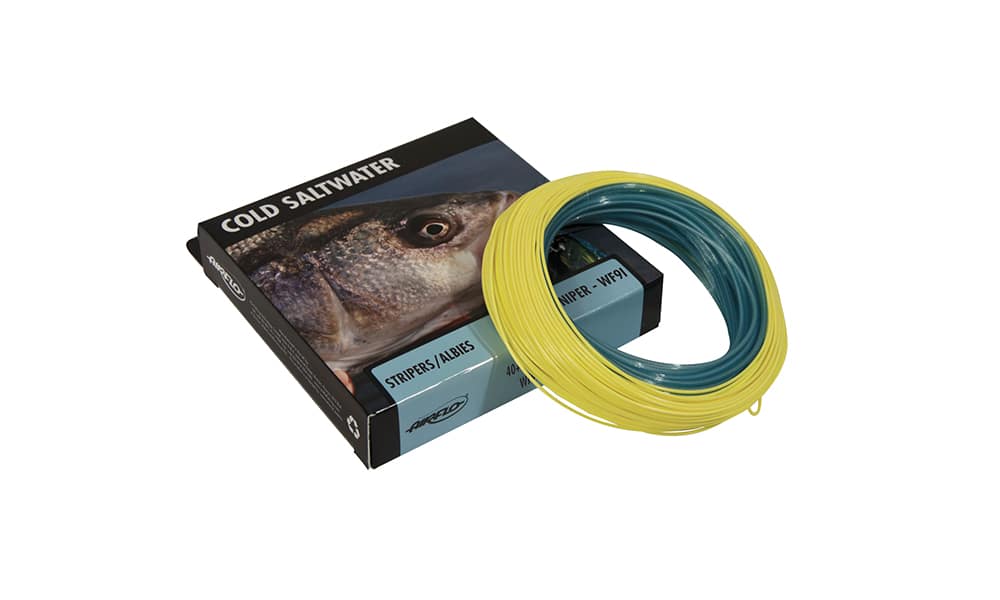
AirFlo, meanwhile, addresses quick-casts with bushy or heavy flies with its Sniper fly lines, available in floating, intermediate sink, type-3, and type-7 sink models from 8- to 10-weight, which include a condensed head and thick tip diameter that allows even less experience fly rodders to cast with greater ease.
